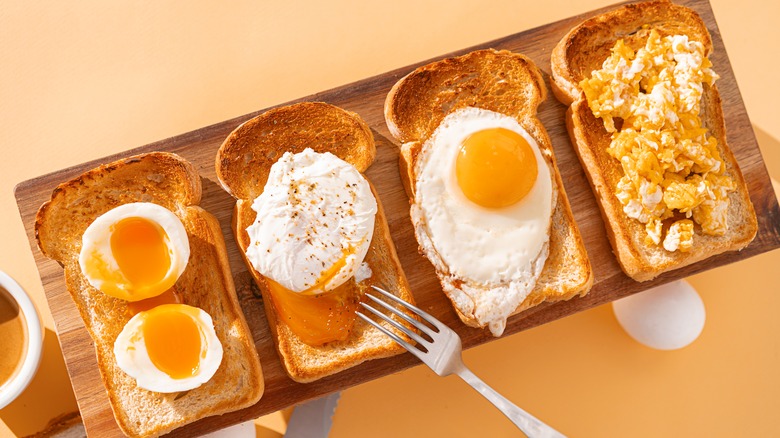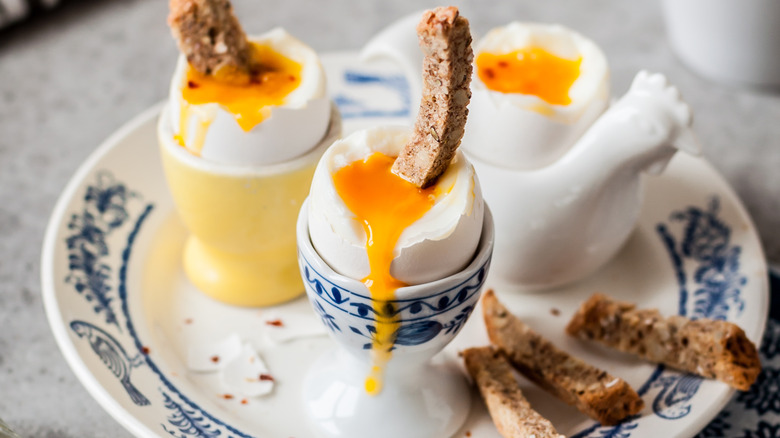The Egg Accessory You've Probably Never Heard Of
Don't let the simplicity of the egg fool you. It may be a commonplace orb found in fridges across the country, but it is also one of the most versatile foods around. Fried, scrambled, boiled, or poached, it's hard to believe that all of these dishes come from the same ingredient. Factor in creations like Eggs Benedict, quiche, egg salad sandwiches, and fluffy meringue, and the egg's possibilities are seemingly endless. Step outside the Western culture and there are many more ways to enjoy this shelled protein.
For instance, in China, there is a delicacy known as the century egg. While each specimen isn't as old as its name suggests, MasterClass explains the egg turns black after being soaked in clay and salt and, eventually, develops a "smooth, creamy texture." Get Cracking offers that a common Mexican breakfast includes huevos rancheros, a tortilla topped with "refried beans, sour cream, and salsa" bedecked with fried eggs on top. Shakshuka, per the Mediterranean Dish, involves lightly poaching eggs in a robust sauce of tomato and bell pepper and is commonly enjoyed in the Middle East and North Africa. And, a nod to the American diner staple, bacon and eggs, the New Zealand bacon and egg pie showcases whole eggs, bacon, leeks, and cheese encapsulated in a puff pastry (via Flavor Bender).
Yes, the often-taken-for-granted egg features prominently in cooking around the globe. And in some countries, it has its very own serving vessel, one that's not so prominent around the U.S.
Some places eat soft-boiled eggs in egg cups
In Britain, it is common to eat soft-boiled eggs perched in "egg cups," a piece of dishware constructed specifically for this occasion. So what is one to do with this undercooked egg once it's sitting in its cup? You simply take off its top and dip skinny slices of bread into it. In the British Isles, this breakfast duo is known as "Egg and Soldiers" or "Dippy Egg" (via Joe) and it is very popular.
While egg cups aren't a common feature in American cupboards, they can be found amongst dinnerware in several far-flung places. France's Chantilly Porcelain Manufactory, according to Getty, operated from 1730 to 1805 and created lavish egg cups. Deutsche Welle reveals that "soft-boiled eggs served in an egg cup with a mini egg spoon, are an essential part of a traditional German breakfast." Germans even have an egg-cracking tool called the Eierschalensollbruchstellenverursacher, which translates to "egg shell pre-determined breaking point causer." Drawings of egg cups have been found dating back to 3 AD in Turkey, and actual egg cups were discovered among the ruins of Pompeii (via Maisonneuve). Australians and Canadians have adopted the egg cup as well.
Do you feel compelled to start using egg cups or is the idea simply "meh?" Perhaps all this talk about dippy eggs and toast soldiers will revolutionize the American breakfast realm, leading to an influx of egg cups and skinny strips of bread. Or not.

